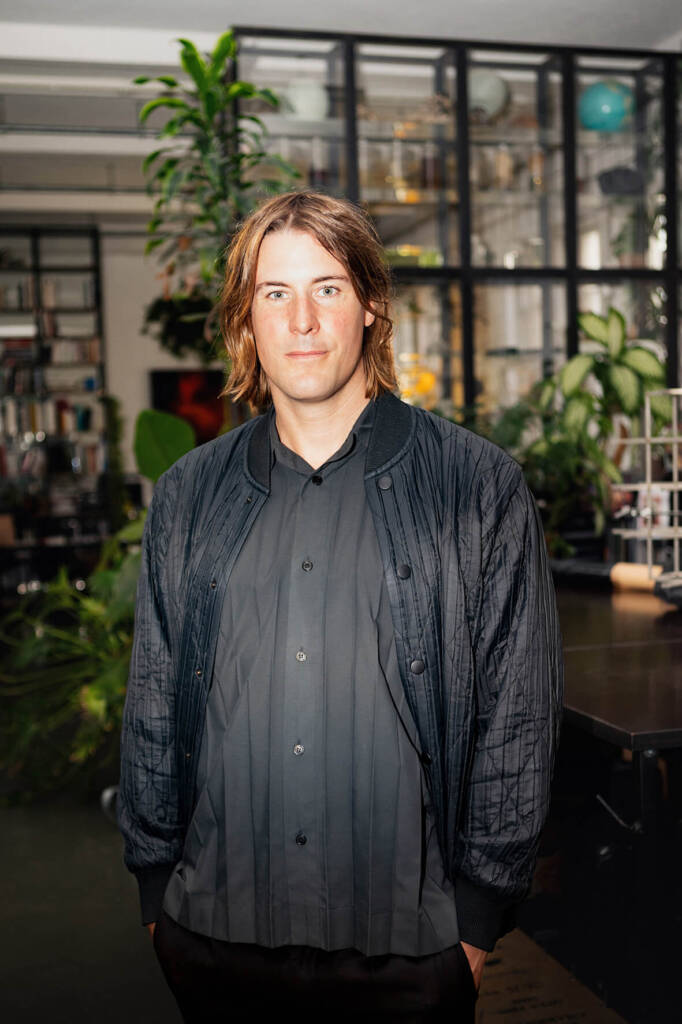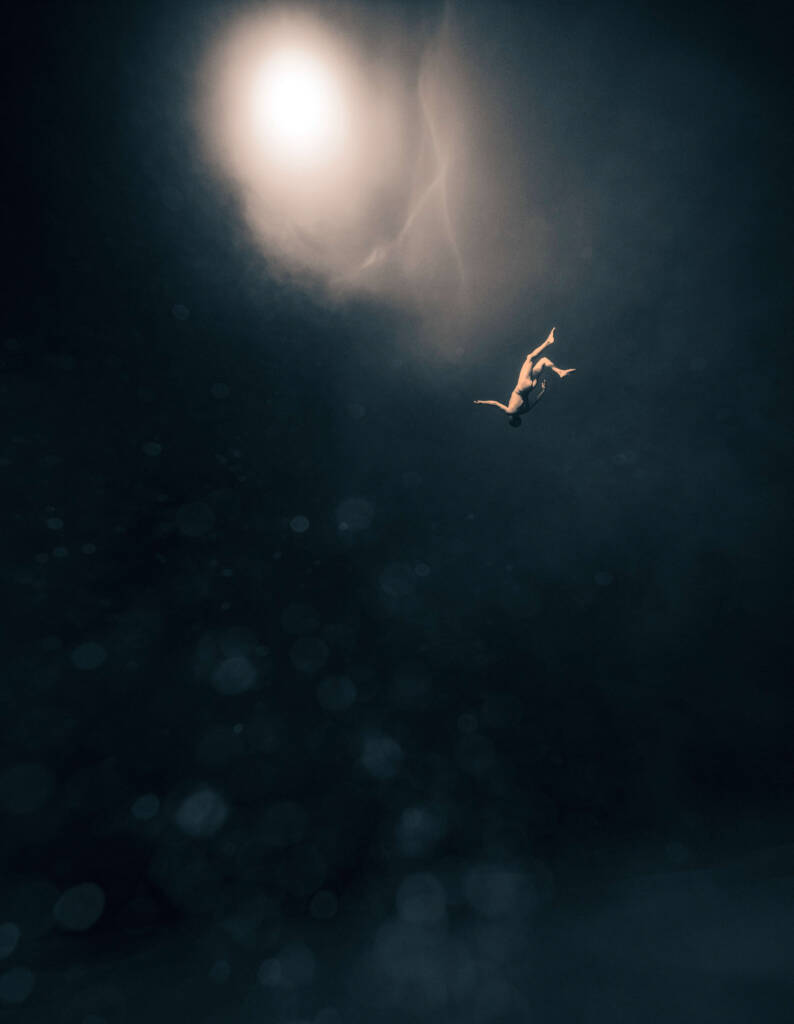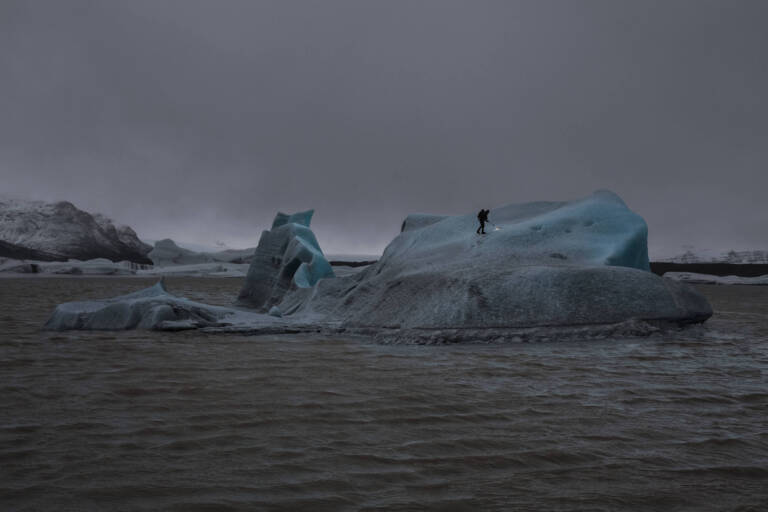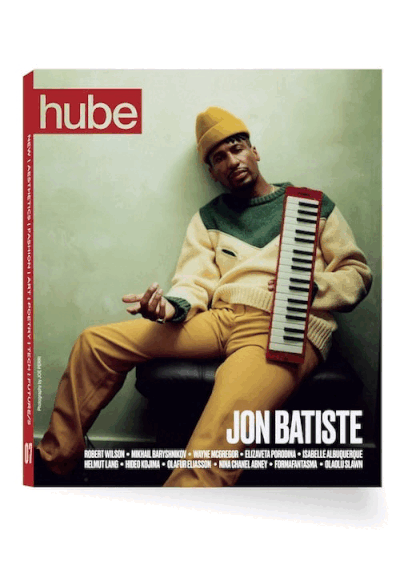
Photography by NORA HEINISCH
Courtesy of JULIAN CHARRIÈRE

Where Waters Meet, 2.31 Atmospheres, 2019
Courtesy of JULIAN CHARRIÈRE and 2025 PROLITTERIS, ZURICH
Julian Charrière listens to the world’s silences and surfaces with questions we can’t afford to ignore. Moving between art, science, and anthropology, his work focuses on the fragile intersections of ecology, history, and human ambition. The artist treats each site not as a spectacle but as a collaborator. His latest solo exhibition, Midnight Zone, on view at Museum Tinguely from 11th June till 2nd November, explores our complex relationship with water—from the Rhine to the remote depths of the Pacific Ocean. Through photographs, sculptures, installations, and film, he reflects on water as both a vital force and a fragile system under pressure. In this conversation, he discusses perception, environmental collapse, and why art’s real power lies in helping us feel what we’ve been taught to overlook.
hube: Your work fuses art, science, and anthropology. Can you reflect on your early life and how it shaped your desire to investigate the relationship between humanity and the natural world?
Julian Charrière: I grew up in a small village nestled between the Jura mountains and Lake Geneva—landscapes shaped by deep time, glacial erosion, and tectonic restlessness. I think that kind of environment imprints you early. There was a constant sense that the land held stories far older than us. Later, I became drawn to how we interpret those stories—how culture, science, and myth all attempt to make sense of the same terrain. My work sits in that overlap: not trying to resolve the contradictions, but to inhabit them.
h: What personal and creative challenges did you face when engaging with sites like Semipalatinsk Test Site? And how did these environments alter your perception of the natural world?
JC: Standing on ground ruptured by nuclear detonation destabilises every inherited notion of landscape. At the Semipalatinsk Test Site, you find yourself in a place where the soil has been weaponised—transformed into a memory bank for violence and trauma. The challenge is not only logistical, navigating zones of restricted access and incomplete data, but deeply emotional. How do you respond, as an artist, to something so abstract and yet so permanent.
Being there confronted me with the reality that the natural world is not passive. It is a witness—sometimes even a victim. These sites alter your relationship to materials, to temporality, and to the very idea of “wilderness.” What appears barren or inert is often saturated with unseen histories, with geologies of consequence.
One of the most haunting aspects is how the thermonuclear blast creates a kind of temporal anomaly. The heat of the explosion is so intense that it fuses the ground, forming a new geological stratum in the space of a microsecond. It compresses time into matter, collapsing the continuity of geological epochs into an artificial and violent instant. This rupture—this unconformity in the stratigraphic record—reveals just how profoundly human activity can inscribe itself into deep time.
For me, being in such a place brought about a profound perceptual shift. It is one of those rare sites where the world becomes legible in an entirely different register—where hope and despair coexist, and where the scale of our actions becomes terrifyingly clear.
h: Much of your work stems from research and field exploration. How do you navigate the transition from conceptualising an idea to physically manifesting it in a sculptural or photographic form?
JC: Fieldwork is a way of destabilising the studio. It opens the process to chance, to risk, to collaboration—with non-human and human, with environments and ecosystems, with the unpredictable. I never travel with a fixed outcome in mind. Instead, I collect: sounds, samples, impressions, atmospheres. I gather fragments that resonate and bring them back to the studio. But the work itself begins to take form in the encounter. It is through that visceral, embodied experience that the intuition for physical manifestation emerges.
The transition from concept to form is not linear. Sometimes it is slow. Sometimes it requires failure—or even multiple returns to the same site. But for me, it is crucial that the final piece carries the residue of the experience, rather than simply depicting it. The intensity of that encounter must be distilled into form—whether static or time-based—so that it holds something of that original charge.

